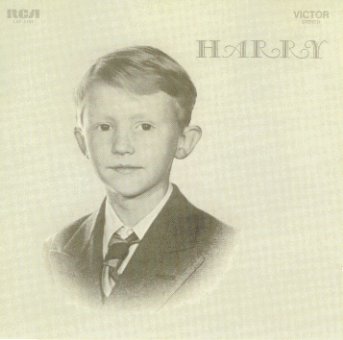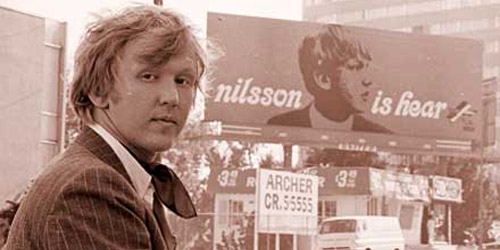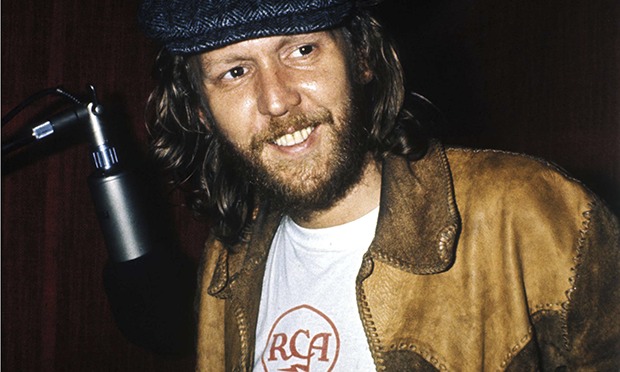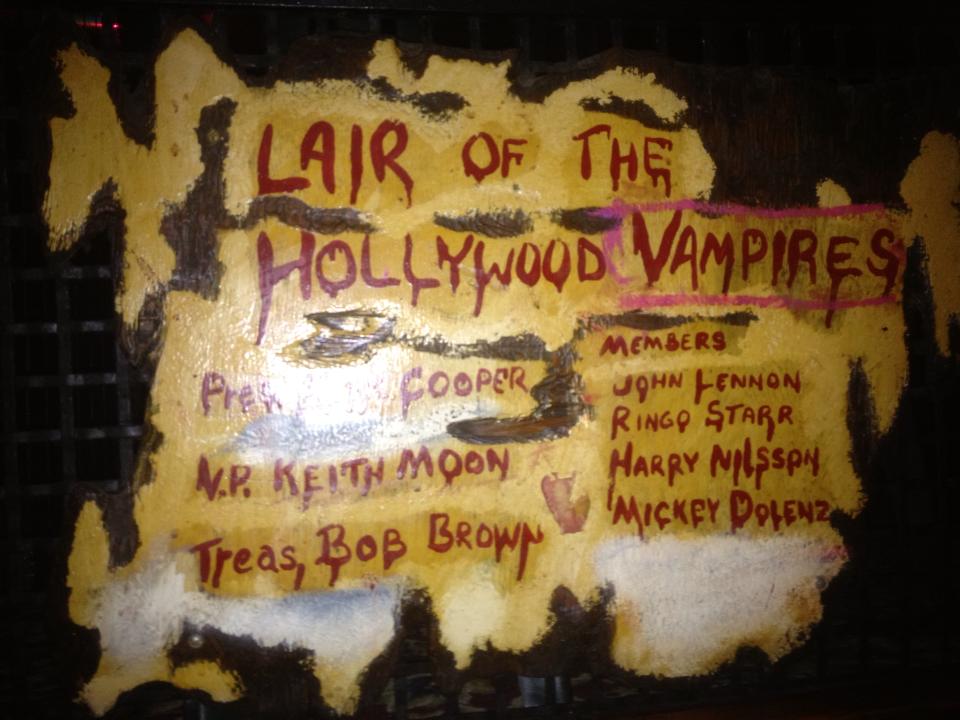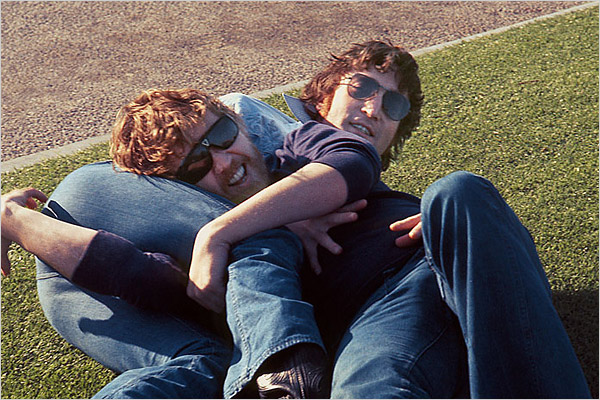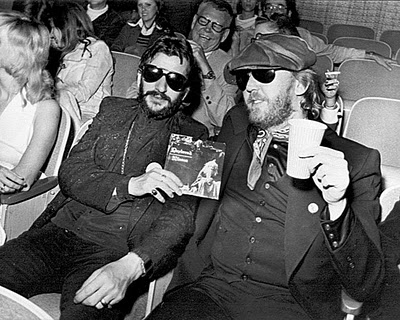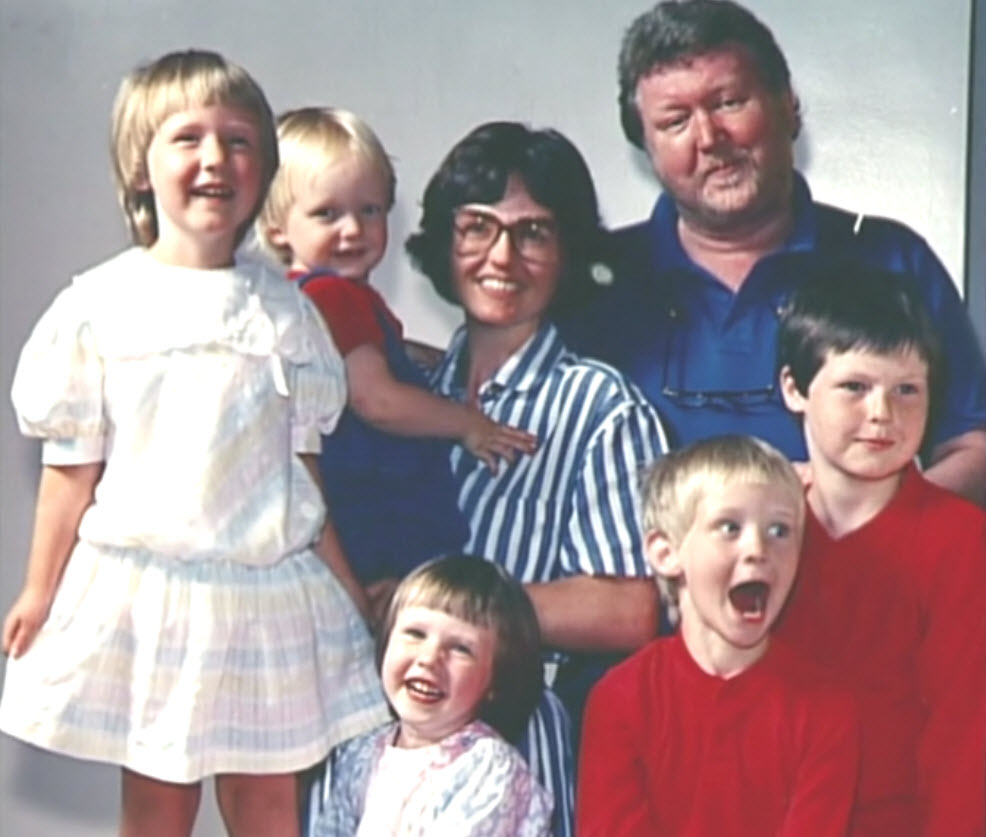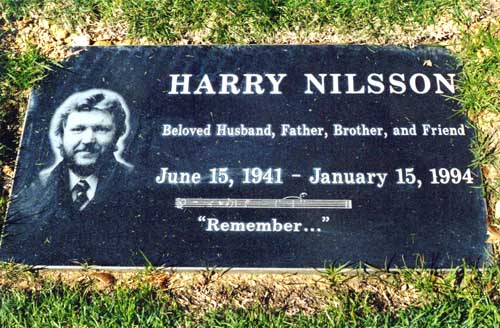
|
The Tenth Annual Dead Man of the Year Award...
By J.C. Mašek III 

Everybody's still talking...
The 2014 Dead Man goes to the incomparable... The Dead Man of the Year Award was launched way back in 2005, making this one our tenth ever entry... so we at WorldsGreatestCritic.com had better make this one count, right? These unique awards have rarely gone to those whom audiences expected. That first Dead Man of the Year Award went to the dynamic and legendary animator Willis H. O'Brien. The following year, two men received the award, artists Jerry Siegel and Joe Shuster, funnyman Phil Hartman was honored in 2007. In 2008 we went back to SFX, honoring Stan Winston. Majel Barrett became our first Dead Woman of the Year 2009. More comedy followed in 2010 with the award going to Leslie Nielsen and we were drawn back to comics with Jack Kirby's 2011 win. Visual arts and special effects combined in our 2012 tribute to Ralph McQuarrie and the 2013 DMOTY jump kicked his way onto the page and proved to be none other than Bruce Lee. Now that 2014 has come to an end, we look back on the landscape of the arts and maybe, just maybe a largely (at least lately) unsung, yet beautiful voice can be heard crooning back to us. That voice belongs to a man named Harry Nilsson. Heard of him? Chances are you have. For those of you who have not, the odds are slim to none that his influence hasn't impacted you directly or indirectly over the years. Who was Harry Nilsson? Beatles fans (and I just might be the biggest) have often pointed out that there is no stateside equivalent to the Fab Four. The thing is... there actually was someone who just about matched the great songs and great sounds of the Beatles and he came from the United States. I'm not talking about Elvis or The Beach Boys. Say what you want about them, but those acts are no Beatles. "Oh, but Harry Nilsson IS?" I can hear you ask. One band certainly thought that he was. That band was called The Beatles. When Nilsson released the critically acclaimed 1967 album Pandemonium Shadow Show (his second overall) the Beatles were given copies by their press officer Derek Taylor (himself an immediate fan) and all four of the Fab Four were completely blown away by what they heard. Harry Nilsson received a phone call in the middle of the night from John Lennon (who had reportedly listened to the record on a constant loop for 36 hours straight) just to tell him that he was great. A few hours later another call came in from Paul McCartney again, just to tell Harry that he was great. The next morning George Harrison called to deliver a similar message. Harry, a Beatles fan (who was also jealous that the band beat him at his own game before he could get started), thought that a call from Ringo Starr might be next. While that call never came, Ringo eventually became more than a "fan" of Nilsson... Ringo became his best friend. This was far from the only claim to Nilsson's fame, nor was this the beginning of his story. In fact, Nilsson had already had s modicum of success in the music business having recorded under various pseudonyms as he supported himself with various jobs. It wasn't until a different notable 1960s band decided to cover one of his songs that he finally quit his job managing a bank. That song, The Monkees' version of Nilsson's "Cuddly Toy" was released right about one month before Nilsson's own Pandemonium Shadow Show. Harry Nilsson was born in 1941 in Brooklyn, New York as Harry Edward Nilsson III. His father, Harry Jr. abandoned the family when the future star singer was only three years old. Nilsson would later write about the pain he and his mother Bette went through in the songs "1941" and "Daddy's Song". Harry and his family (including a half brother and half sister) lived in poverty, even as they moved around the country looking for a better life. Still, the young man was already showing signs of vocal talent. Harry improved his voice thanks to lessons from his talented Uncle John. Although Nilsson never even finished high school (partially due to the fact that he had to work to help support the family), the teenaged Nilsson showed early aptitude with computers. This skill allowed him to get his job with the bank. In fact, Nilsson was so good at his job that even when the bank discovered that he had lied about having graduated from High School, he was able to keep working. This he did... by night. But by day, Harry Nilsson was already working on his songcraft. A talented singer and musician, Harry initially began to copy famous songs to perform. Upon forgetting a verse or chord, the young man would simply make up his own until he had completely replaced the original song with his own composition. And thus a songwriter was born. Nilsson was also very skilled at performing live, which he had started before the bank job while working at Los Angeles' Paramount Theater. With his friend Jerry Smith he formed a vocal duo, which he referred to as their own version of The Everly Brothers. Nilsson started on the ukulele before graduating to guitar and piano... and mastering both. However, Harry Nilsson, as any fan will tell you, was never known as a live performer. In fact, an early live set was greeted with laughter from the crowd (or, more likely, a very small portion of that crowd) and Harry never got over his stage fright. "I don't do concerts" he was known for saying. In 1962, Nilsson, already an accomplished singer and musician, took a job singing demos for the famous composer Scott Turner, albeit on songs that were intended for and eventually released by other artists. Still composing songs himself, Nilsson worked with songwriter John Marascalco on a song for Little Richard. Richard was amazed by Nilsson's voice. This praise helped Nilsson to get his first single released, a novelty song called "Baa Baa Blacksheep" recorded under the name "Bo Pete". The Bo Pete single was followed by a song called "Donna, I Understand", which prompted Mercury Records to give Nilsson a record contract. So fame was instant, correct? No. At this time, Nilsson was still a bank manager and the songs he released were credited to the pseudonym "Johnny Niles". Still, while Nilsson's initial rise was a slow, rung-by-rung ascent the connections and growing clout that he had earned allowed him to work with such names as Phil Spector, Perry Botkin, Jr. and George Tipton. These connections, especially Tipton, who invested thousands to finance some Nilsson recordings, led to Nilsson's signing with RCA Records and a number of singles that were actually credited to Nilsson, not a pseudonym. At the same time, many of Nilsson's songs were already being recorded and released by big acts of the day including everyone from the Yardbirds to Fred Astaire. Do you know those singer songwriters who have incredibly great songs but many suggest that they shouldn't sing them? Bob Dylan, for all his accomplishments, is often mentioned as an example of that very thing. Not so for this year's DMOTY. Harry Nilsson was always an incredible singer and both his own songs and cover versions sounded better when performed in his own voice. But it wasn't until Davy Jones chose to record "Cuddly Toy" with the Monkees that Nilsson finally quit his bank job. Almost immediately, Harry's slow rise became meteoric. The Beatles remained enormous fans of Harry Nilsson's and often cited him as an influence on their later work. "Nilsson is my favorite group!" John Lennon proclaimed at a 1968 Press Conference. When asked for his own favorite, McCartney agreed, saying "Nilsson." This praise led Nilsson's cover of the Beatles' "You Can't Do That" to become a hit in multiple countries. With this fame rising, Nilsson was still used to working out of an office and he requested and was granted one at RCA headquarters. There his phone began to ring off the hook with surprised callers in disbelief when Nilsson himself answered the calls. He entertained questions from all over the world and turned down every offer to perform live. RCA and Nilsson's manager insisted on a small tour of stage performances, which he did do... and hated. From that point on he vowed to stay in the studio. This was too bad for the boys who loved his work so much. But since the Beatles couldn't go see Harry live, they invited Harry to meet them at Apple Corps. which he eagerly did. In 1968 Nilsson released the album Aerial Ballet, named in honor of his paternal grandparents, Swedish circus performers renowned for their skills with "aerial ballet". This album produced a single in "Everybody's Talkin'", originally written and recorded by folk artist Fred Neil. The song was a hit, but its successes were nothing compared to what happened the following year when Nilsson was called in to write a song for the 1969 film Midnight Cowboy. As a placeholder, producers were using "Everybody's Talkin'" and wanted to replace it with a new Nilsson composition. That song was "I Guess the Lord Must be in New York City" and if you're not immediately familiar with that song, it's probably because the producers changed their minds, having fallen in love with "Everybody's Talkin'". The song was released again as a single, under the title "Everybody's Talkin' (Theme from Midnight Cowboy)", and this time it was an undeniable monster hit. It became a top 10 hit in the USA and earned Nilsson his first Grammy nomination. Guess what. He won! Aerial Ballet also featured a song called "One" which began with Nilsson's musical impression of a droning telephone busy signal. Surely you've heard that song... but perhaps not Harry's version. It was covered by Three Dog Night in 1969 and became another monster hit with fans all over the world singing along with "One is the lonliest number that you'll ever do!" Three Dog Night later had another hit with "Mama Told Me (Not to Come)" which was written by Randy Newman. Nilsson himself was not to be outdone and in 1970 he released an entire album of Newman songs (with Newman on piano) appropriately entitled Nilsson sings Newman. One song that was written and recorded for Aerial Ballet but never made it onto the track list was called "Girlfriend". When Nilsson was contracted to write and perform the theme song to ABC's The Courtship of Eddie's Father (1969), Nilsson re-wrote the song as "Best Friend" (which is often associated with Nilsson's real life best friend, Ringo Starr). The success of the sitcom helped propel Nilsson to greater recognition. Nilsson would be covered again by the Monkees with Davy Jones performing "Daddy's Song" in the experimental film Head. On the film front, Nilsson also recorded the entirety of the soundtrack for the same year's Skidoo. Harry would have further chart success with his 1969 album Harry. "I Guess the Lord Must be in New York City" was released on that album and as a single. Not only did this become a top forty hit for Nilsson, but it also found its way onto another movie soundtrack. While it's hard to say that the makers of Midnight Cowboy made anything but a brilliant choice with "Everybody's Talkin'", the song that Harry had actually written for that film may have been their loss, but it was La Mortadella's gain. Both Harry and Nilsson sings Newman were commercial and critical hits but this was a far cry from what the Beatles' favorite musician could pull off. Nilsson's fame was growing as was his partying style. He began to become well known for abusing alcohol and cigarettes and drugs. Still, he never lost that playful side of himself, creating an album called The Point, itself a soundtrack to an animated TV movie of the same name (and directed by Fred Wolf). This story of a child with a round head being born to a race of people with pointed heads was an audience favorite (especially for its touching ending) and the album spawned a hit single in "Me and my Arrow". Still, Nilsson was best known as a songwriter, not as a singer. This was about to change. He approached producer Richard Perry to produce his next album in England. Perry agreed provided that the hard-partying Nilsson give Perry complete control. He agreed (though he hardly always stuck to this agreement) and the result was 1971's incredible Nilsson Schmilsson which topped everything the singer/ songwriter had done before. The Nilsson Schmilsson album is best known for Harry's cover of the Badfinger track "Without You". On this song, Nilsson's true vocal talent soared with his multiple octaves being employed for some of the most amazing and beautiful high notes ever to be released on a hit single. There is hardly any way to describe how amazing Nilsson sounds on this song, especially considering the fact that the version that was released was reportedly the first take. Record buyers flocked to the single and the album and Nilsson was suddenly not just a star but a superstar. He won his second Grammy for "Without You". It is a bit of classic irony that the two biggest songs of this incredible songwriter's career (and the only two to earn him Grammies) were actually cover tunes. This is hardly the only success of the record. The novelty calypso song "Coconut" (as in "put the lime in the coconut and drink 'em both up") was also a noteworthy hit that remains popular today. One of Nilsson's best songs is also featured on the Schmillson album, a hard rock track called "Jump into the Fire". While not exactly a hit, it has to be heard to be believed, especially when compared to "Without You". The idea that these are even the same artist (much less features from the same album) is absolutely mindblowing. Nilsson, however, was hardly prepared for the immense fame that followed even though he did believe he deserved it. This resulted in quite a bit of self-medication with drugs and booze, a trend that cost him his second marriage (to Diane Clatworthy). Their son Zak later compared the absence of his father with Harry's own despondency at the absence of his own (as chronicled in the song "1941"). Nilsson and Perry quickly reunited (while Schmilsson was still charting) to create a follow up in the 1972 record Son of Schmilsson. It would have been easy for the talented singer and songwriter to follow the massive selling preceding album with something of a thematic sequel and, indeed, the title suggested the same. However, Harry's hardships and sadness over the dissolution of his marriage (the divorce wouldn't be final until 1974) caused him to reject many of Perry's ideas. When Perry and RCA pressured Harry for a hit single he came up with the famous-cum-infamous number "You're Breakin' My Heart" which featured the chorus "You're breakin' my heart, you're tearin' it apart, so FUCK YOU!" The song is catchy, well written and addictive and has every feature of a hit single... except for the profanity that he refused to remove. As angry and hurt as Nilsson was on this track, one of the final lyrics does switch to "You're breakin' my heart, you're tearin' it apart, but I LOVE YOU!" "Spaceman" was a hit single for the album but the next two singles "Remember (Christmas)" and the tongue-in-cheek country song "Joy" were not nearly as successful. Even the album cover featured Nilsson as an angry-looking vampire as opposed to the affable, relaxed Nilsson we saw on the cover of the 1971 collection. Would Nilsson learn his lesson and return to commercially successful songs and albums for his next release? While Perry and RCA pressured Nilsson for another Nilsson Schmilsson, our hero had other plans and instead released A Little Touch of Schmilsson in the Night. This 1973 album featured no original Nilsson songs but instead was a collection of covers of pop standards. Although this was accompanied by a BBC special, the album was not successful. Two years later, Lennon would release his own cover album in Rock 'n' Roll, but focusing on 1950s and '60s rock songs it fared much better. Before that time, however, Lennon was in the midst of his "Lost Weekend", which described his eighteen month separation from wife Yoko Ono and his affair with Ono's friend May Pang. During this Lost Weekend, Lennon and Nilsson found themselves both living in Southern California and the duo became closer than ever. Ostensibly their project was to produce Nilsson's next album Pussy Cats, but the duo became much better known for their hard partying in Los Angeles. They raised hell and became well known as members of "The Hollywood Vampires" alongside other 1970s rockers like Keith Moon of The Who, Mickey Dolenz of the Monkees and, of course, Ringo Starr. Appropriately, the "Vampires'" president was listed as none other than Alice Cooper. The Rainbow Bar and Grill in Hollywood still features a plaque in tribute to the Hollywood Vampires, but another club called The Troubadour booted Nilsson and Lennon for heckling a comeback performance of The Smothers Brothers. The pair went on to trash hotel rooms and their friends' homes alike. Some "Lost Weekend", huh? And where do I sign? Amazingly, this era and the recording of Pussy Cats marked the last known time Lennon and McCartney ever played together at a late night jam session. Sadly, this same session resulted in Nilsson's rupturing of a vocal cord. What did Lennon do about his production subject's injury? Nothing. He didn't know about it because Nilsson hid the fact until recording was complete, fearing that Lennon, a dear friend, would cease production. Considering the fact that Nilsson was actually bleeding on the microphone and had to be rushed to the hospital by Dolenz, this would be a hard fact to miss, but, again, drugs. The album was called "Pussy Cats" in response to the bad press their hard partying had gotten. This wasn't the only "inside joke". The album featured doll versions of Nilsson and Lennon on the cover and at their feet were two alphabet blocks reading "D" and "S" with a small rug between them. "D-RUG-S". We get it. The fact that all of this was under a small table implied "Drugs under the table." The 1974 album was a huge critical success and has a respectable legacy, but failed to reach the commercial successes of Nilsson Schmilsson. By this time, however, Nilsson was less interested in commercial success than artistic integrity. And partying. And drugs. This was further evidenced in Nilsson's other 1974 release Son of Dracula, which was a collection of songs from Nilsson Schmilsson and Son of Schmilsson that served as the soundtrack to an Apple film of the same name. This "Rock and Roll Dracula Movie" featured Nilsson as "Count Downe", the 100 year old son of the murdered Dracula who is set to be crowned King of the Netherworld (though he would give anything to be mortal) and Starr (who also produced) as the wizard Merlin (in full wizard regalia with pointy hat, starry robe and long, white beard). Son of Dracula (1974) is a bizarre movie that rightly received scant release but had a series of amazing and fun moments, the best of which are the musical numbers which Harry performs with the likes of Peter Frampton and Keith Moon. The film was not a commercial success (and didn't have the release to allow such a thing) but also was somewhat light on the "artistic integrity", though heavy on the drugs, still. Then again, it is a hell of a lot of fun, especially for stoners themselves. Also in 1974 tragedy struck at la casa de Nilsson. Harry spent a good deal of time in London and so he kept an apartment there, designed and decorated by a company owned by Ringo Starr. However, ever the generous host, he often let other rock stars and other good friends stay there whether he was around or not. One of these stars was Cass Elliot, famous for her stint with The Mamas & The Papas, but then enjoying a solo career, especially at the sold out London shows that met her with many encores and standing ovations. Most fans or even casual observers know that Mama Cass died after one of these shows of heart failure (the "ham sandwich" urban legend was debunked long ago), but most fans might not realize that the place she died was Harry Nilsson's apartment (while Nilsson was in Los Angeles). Nilsson, Lennon and Starr moved into a house together to attempt to get off of drugs and while Starr and Nilsson were the two closest friends of the bunch, Lennon and Nilsson soon left for New York to negotiate Nilsson's contract with RCA (who were wary of re-signing the artist after his recent failures. Lennon implied that re-signing Harry might mean that RCA would get Starr and Lennon through their Apple Records subsidiary, but while Harry got the contract (and one of the biggest advances in history), Lennon and Starr never signed with RCA. Nilsson didn't bring huge successes to RCA, however, and although his voice had improved and shockingly, had gotten back to its beautiful heyday, his next three albums, Duit on Mon Dei (1975), Sandman (1976) and ... That's The Way It Is (1976) were commercial failures. Nilsson's next album was Knnillssonn (1977), which promised to be Harry's comeback. RCA was also game for Nilsson's comeback and prepared a massive marketing campaign... however, it all fell flat when another RCA recording artist died unexpectedly. That recording artist was named Elvis Presley and suddenly RCA was working overtime trying to meet the demands for The King's back catalog. Knnillssonn floundered without label support (and since Harry didn't tour, he was unable to truly promote himself). Still, Knnillssonn is an overall well-reviewed album and sounds more like The Point and Harry than any other. It was later named as Nilsson's own favorite album. This abandonment by RCA and their choice to release Nilsson's Greatest Hits without consulting him caused Nilsson to abandon the label himself and seek greener pastures. Other reports, however, had RCA paying Harry $3 million to buy him out of his contract. Many friends reported that Nilsson was ecstatic over this buyout, many of the same friends indicated that Nilsson was depressed over this action and thought that it might have marked him as a has been. But while Nilsson's commercial and artistic endeavors were not quite bringing him happiness, his personal life was experiencing something of a renaissance. Nilsson wandered into an ice cream shop, half drunk on a Sunday Night and met a pretty, 19 year old Irish girl named Una O'Keeffe working behind the counter. The first thing Nilsson ever said to O'Keeffe was "You have the most beautiful eyes. Will you marry me?" The same year that Sandman and ... That's the Way it Is failed to make serious strides on the charts, Nilsson married Una with Ringo Starr as his best man. They had six children together and he remained married to her for the rest of his life. Soulmates. Sadly, tragedy would soon strike again in Harry's life... and his London apartment. Nilsson once again loaned his apartment out to a friend, this time the Who's incredible drummer Keith Moon. This was against Harry's better judgement, as he feared that the flat might be cursed after Mama Cass' death. However, the Who's guitarist Pete Townshend assured him that "lightning wouldn't strike the same place twice" and Moon was given the flat in order to dry out and recover from alcoholism. Moon took 32 clomethiasole tablets, a drug that was intended to help him with alcohol withdrawal symptoms, but he was told not to take more than three per day. Moon choked on his own vomit and died. Nilsson was destraught and quietly sold the property to Townshend who still didn't believe the curse. Nilsson was not ready to give up on his career yet. He collaborated with Botkin and friends Bert Convy and Allan Katz on the musical Zapada. This was followed by Nilsson's writing of every song and the entire score for the Robert Altman film Popeye (1980) starring Nilsson's friend and party buddy Robin Williams. Much of this drugging and partying took place during production in Malta. The film and its soundtrack received mixed reviews but it was the biggest thing Nilsson had done in years. Nilsson's final (released) album was Flash Harry, released the same year as Popeye and featured songs written with Eric Idle, Van Dyke Parks, John Lennon and Ringo Starr amongst others. The album would be released in the UK (and was not a hit) but would not see release in the USA until 2013. It was not the failure of Flash Harry that caused Nilsson to become, as he put it, a "retired musician" it was another devastating event from that year. On December 8, 1980 a fat, sweaty, disgusting slice of human slime spread on a brick of shit walked up to John Lennon, his better in every way, and shot him. Lennon died soon after and the piece of shit who did it is still alive and in prison. His parole has been denied every single time it has come up and he has to be kept away from other prisoners because they would surely tear his head off for what he did to one of our most amazing musicians. Lennon was only 40 years old. Harry Nilsson's first words upon hearing about this tragedy were "Jesus Christ... not HIM!" Nilsson broke his tradition of never appearing publicly and instead began to heavily lobby for gun control along with the Coalition to Stop Gun Violence. Nilsson went so far as to become the National Chairman of the End Handgun Violence Week and met with lawmakers, appeared in commercials and in front of crowds for this cause. Anti-Handgun violence campaigns became his life and he stopped songwriting. He even began performing live again at Beatlefest conventions in honor of his fallen friend. Harry never recovered from the loss of Lennon (and who could?). Una remained Harry's strength and he loved his children dearly. Amid his activism he recorded only sporadically and only when commissioned by others. He worked with Yoko Ono on a Lennon tribute album and produced the film The Telephone for Hawkeye the production house he founded with Terry Southern. However, Hawkeye failed in 1990 and misfortune struck Nilsson yet again. The large sums of money that Nilsson had accumulated as a songwriter and musician were managed by financial advisor Cindy Sims. In 1990 it was discovered that Sims had embezzled from the artist, leaving him, his wife and their six children with a line of creditors and only three hundred dollars in the bank. Sims served less than two years in prison and was released... but kept all of the Nilssons' money. Nilsson was forced to sell his home and many of his belongings. All the things he had worked for were gone. He had only one thing left, his songs. Depressingly, Nilsson was forced to walk around to various ad agencies with his CDs, attempting to sell his great songs for commercial use. He never quite recovered from this blow and as active as Nilsson was at this time, his health started to deteriorate. One of the last songs he recorded that was released was for another Robin Williams film, Terry Gilliam's The Fisher King. He flew to London once again, this time with his now-grown son Zak accompanying him as he recorded "How About You" for the soundtrack. Nilsson's voice was much weaker and he physically struggled to complete the song. However, this was still Harry Nilsson and he put forth his best sounds, playing the instrument of his voice as best he could. The results speak for themself. He sounds excellent. Some of this credit might go to the positive influence of Zak Nilsson who spent the only significant amount of time in his life with his dad. Nilsson also contributed the title song to the 1992 film Me, Myself, and I. Nilsson's physical condition continued to deteriorate to the point that he had a severe heart attack on Valentine's Day, 1993. He was given one year to live. He had successfully pulled his family out of bankruptcy but he was almost gone. Nilsson recorded one final album (tentatively entitled Papa's Got A Brown New Robe) and pressured his former label RCA a boxed set of his career. The new album's vocal tracks were completed with producer Mark Hudson, but the album was never released. The boxed set turned into a 2-CD anthology instead. Nilsson wouldn't live to see that release as he died of heart failure on January 15, 1994, less than a year after his first heart attack. The last thing he said to his wife before they went to bed that night was "I want you to know that I love you soooooooooooo much!" (making the "so" as long as he could). That was the last thing he ever said to her. Soulmates. The day Harry Nilsson died, a massive Earthquake hit Los Angeles. Many friends believed that this was not a coincidence. His funeral was well attended by rock stars and friends alike (many of the same people). Stories were told at his service, even as aftershocks hit the cemetery. Eric Idle speculated that "Harry's gone to heaven and just found the bar is closed!" Musician, producer and friend Mark Hudson recalled that as Harry's friends mourned, George Harrison led the crowd in song as they all chanted "You're breakin' my heart, you're tearin' it apart, so fuck you!" Nilsson is survived by a legion of fans, a complement of friends that many of us would envy, seven children, one stepson and three grandchildren. Those who remember him personally claim to remember his smile above all things. Ringo Starr refuses to comment publicly on Harry Nilsson, his best friend. To illustrate how close they were, Tom Snyder once asked Starr "If you were in a jam at three o'clock in the morning and there was one person that you could call for help who would it be?" Starr did not hesitate as he responded "In America it's, like, Harry Nilsson. I think I could always call Harry night and day and he would come and save you. I'm very lucky with friends like that." The only other fallen friends that Ringo refuses to talk about are John Lennon and George Harrison (who passed away in 2001). Nilsson's contributions to music are virtually incalculable. Nilsson created so many incredible songs (and made the songs he covered even better), making the songscape on the whole much better than it would have been without him. That said, Nilsson also influenced so many artists that have influenced so many more. While he was heavily influenced by The Beatles, all four of the Fab ones cited Nilsson as a major influence on them. We might not have gotten those last few Beatles albums (at least not in their present forms) without him. Midnight Cowboy would never have been the same with the original version of "Everybody's Talkin'". The Popeye film is now remembered by fans as a classic. This is largely due to Nilsson. His songs "One", "Without You", "Coconut" and "Breakin' my Heart" are still loved today (though that last one doesn't exactly get much airplay for obvious reasons). Nilsson continues to make waves today. A great documentary called Who Is Harry Nilsson (And Why Is Everybody Talkin' About Him)? was released in 2006 and I highly recommend it. In 2013, the boxed set Harry had lobbied for was finally released by Sony, entitled The RCA Records Collection and even included Flash Harry for the first time in the USA. Nilsson has had books written about him and is one of the most "covered" artists in history. Pussy Cats was covered in its entirety by The Walkmen. Tribute albums pop up consistently, most recently the 2014 release of This is the Town: A Tribute to Nilsson, Vol 1, on which Indie Rock bands perform their renditions of classic Harry songs. Nilsson's music continues to be heard in movies and on TV. My Name is Earl, Life On Mars, Bones, The Simpsons and Girls are just a few of the shows that have prominently featured his work recently. Yes, it's safe to say that even throughout 2014, everybody's still talkin' about him! Harry Nilsson remains an epic presence in music, whether he is recognized or not. His influence is everywhere and rightly so. The man was a musical genius with a voice that can't be equaled. He was also an artist of the top degree and even when his experiments didn't work, he still experimented and should be credited for that. There is no doubt that the world of music and art, not to mention film and television, is much better for Nilsson's influence. See you in the next reel, singer, songwriter, father, husband, teacher and legend! Rest in Peace, God Bless, and may the bar in Heaven open up for you!
Harry Nilsson
|
WorldsGreatestCritic.com So Click HERE for more reviews and see why. The 2014 World's Greatest Critic's Dead Man of the Year Awarded to Harry Nilsson! This article was written and researched by J.C. Mašek III who is solely responsible for the content of all of this website Including the final decision of unparalleled awardee year after year. Nominate yours for 2015 now... in song! Got something to say? Write it!
| |


